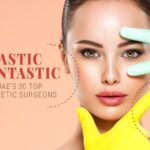Have you ever wondered when exactly skincare became so important that it demanded 8-10 steps in order to be fully realised? In the age of social media, when anyone and everyone is under scrutiny, it makes sense to care for the very foundation of beauty – the skin. At the same time, the incredible pace of our daily lives have also ushered in an era of wellness where skincare has almost become a form of self-care – you look good, you feel good. That feel-good factor has come to define an industry that is expected to contribute a whopping $186.60 billion in revenue worldwide. In a nutshell, when it comes to skincare, the stakes are really high.
That’s the reason why you will find many content creators on social media talking about skin hacks – the quick-fixes that help you look and feel your best. Nipun Kapur Sohal is not one of them. The UAE-based skinfluencer is a certified consultant and having amassed a robust following, she is known to bust skincare myths that most are often raving about needlessly. For example, conventional wisdom tells us that actives are not quite good for the skin. “That is a myth,” Nipun tells us. “Actives have existed in skincare for over 100 years but they were used by prestigious skincare brands such as Elizabeth Arden, Shiseido and others. Milk extract and sugarcane has been a common ingredient and is a natural source of lactic acid, which is an AHA. The legendary 8-Hour Cream from Elizabeth Arden had salicylic acid. What we have today are lab-produced actives which make them more affordable for companies to produce and hence more affordable for consumers.”
Actives like alpha-hydroxy acids and beta-hydroxy acids have become staples in modern skincare regimen. Have acne? Apply salicylic acid. Hyperpigmented? Go for Lactic Acid. Often oversimplified on social media, the skin can suffer horribly when the amount and quality of actives is compromised. “The problem is today, they are available in individual formats, thanks to brands like The Ordinary and are available in medium-to-high concentrations, which means overuse can severely damage the skin barrier and cause long-term side-effects. This is why education is key and while brands like The Ordinary have done a great job of educating consumers with content on their websites, many others have not focused on education, but done a quick cut-copy-paste.”
Nipun’s passion for skincare took root as a young girl who was intrigued by everything she saw in her mother’s vanity case. “She had a simple but dedicated beauty regimen that she followed for as long as she lived. When I look back, I see myself as this little girl in awe of her mother’s beauty and the beautiful creams that smelt amazing. That’s what laid the foundation for what I do today. It’s incredibly personal.”
The simple skincare regimen is not-so-simple anymore. Nipun has further trademarked a formula that she claims brings most desirable results for the skin. The C4 Method stands for cleanse, correct, complement and cover. Cleansing involves routine washing of the face, while correcting means to use serums or other treatments that attend to the problems of the skin. Complement involves adding a serum that aids the primary treatment and works best in cases of melasma, hyperpigmentation and intense fine lines and wrinkles. Cover, as conventional wisdom suggests, is about applying sunscreen (during the day) and night cream.








